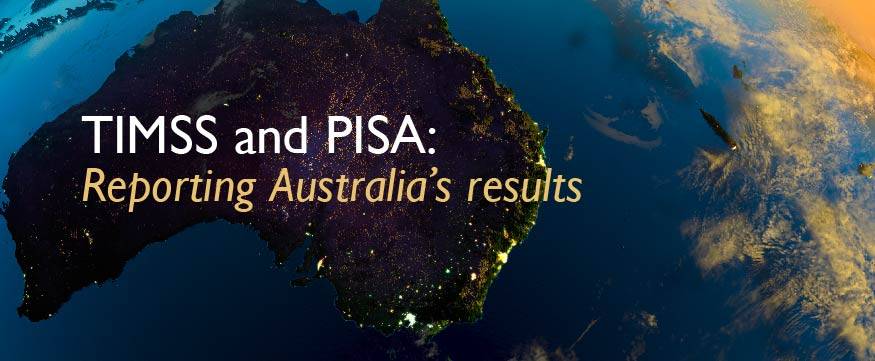
Full TIMSS and PISA results: Time to address disadvantage is now
Media release 15 Mar 2017 5 minute readTwo reports released today by the Australian Council for Educational Research (ACER) confirm that the gap between advantaged and disadvantaged students has barely narrowed over the past 15 years.
15 March 2017: Two reports released today by the Australian Council for Educational Research (ACER) confirm that the gap between advantaged and disadvantaged students has barely narrowed over the past 15 years.
Releasing the reports, TIMSS 2015: Reporting Australia’s results and PISA 2015: Reporting Australia’s results, ACER Director of Educational Monitoring and Research Dr Sue Thomson said further analysis of results from the 2015 Trends in International Mathematics and Science Study (TIMSS) and the 2015 Programme for International Student Assessment (PISA) show that the decline in the achievement of disadvantaged students is particularly worrying, and presents in many different ways.
TIMSS 2015 assessed more than 580 000 students in Years 4 and 8 across the participating countries, including a nationally representative sample of around 16 000 Australian students from 572 schools. PISA 2015 assessed more than half a million students across the participating countries and economies, including a nationally representative sample of around 14 500 Australian students from 750 schools. ACER is the national project manager for the 2015 cycles of TIMSS and PISA, and is releasing the reports on behalf of the Australian, and state and territory governments.*
Investigating background and demographic data, the new reports find that students have higher achievement when: they are from a high socioeconomic background; there is a strong school emphasis on academic success; they have a strong sense of school belonging; and they are not bullied.
“TIMSS and PISA indicate that disadvantage remains an issue,” Dr Thomson said. “Findings from PISA reveal that the difference between advantaged and disadvantaged students is equivalent to around three years of schooling.
“It also matters which school a student attends. PISA shows that the school a student attends has an impact on outcomes. Disadvantaged students in average socioeconomic level schools, for example, are almost a year of schooling higher than those in disadvantaged schools. Similarly, disadvantaged students in advantaged schools are more than one year of schooling higher than those in average socioeconomic level schools.”
While the reports reveal that socioeconomic factors matter, they show that schools and teachers matter, too.
Students completing PISA reported classroom discipline levels that placed Australia below the OECD average. About one-third of the students in affluent schools, and about half of those in disadvantaged schools, reported that in most or every class there was noise and disorder, students didn’t listen to what the teacher said, and that students found it difficult to learn.
Similarly, TIMSS showed a clear relationship between the achievement of Australian students and principals’ reports of school discipline problems.
While TIMSS and PISA show that disadvantaged students are less likely than their advantaged peers to report that their teachers are very engaging or supportive, the good news is that when they do experience very engaging or supportive teaching, they – and their advantaged peers – have higher achievement than those students who face less engaging or supportive teaching.
Both TIMSS and PISA report on students’ attitudes towards learning, with more positive attitudes towards learning associated with higher achievement levels.
“TIMSS shows that disadvantaged students on average like mathematics and science less, are less confident, value mathematics and science less and have a lower average achievement than their advantaged peers,” Dr Thomson said.
Dr Thomson also noted particular issues for Indigenous and non-metropolitan students. “Substantially fewer Indigenous students achieve the TIMSS Intermediate international benchmark – the proficient standard for Australia – than their non-Indigenous peers. TIMSS also shows that students in provincial and remote schools are less likely to achieve the benchmark. We have seen no improvement in either case in 20 years of TIMSS testing and reporting,” she said.
ACER conducts TIMSS in Australia on behalf of the International Association for the Evaluation of Educational Achievement (IEA) under the direction of the TIMSS International Study Center at Boston College, and conducts PISA in Australia on behalf of the Organisation for Economic Cooperation and Development (OECD) with funding from the Australian, and state and territory governments.
The TIMSS 2015: Reporting Australia’s results and PISA 2015: Reporting Australia’s results reports examine achievement more fully and incorporate descriptive and analytical findings using background and demographic data. They follow the release late last year of TIMSS 2015: A first look at Australia’s results, available from the Australian TIMSS website www.acer.edu.au/timss, and PISA 2015: A first look at Australia’s results, available from the Australian PISA website wwww.acer.edu.au/ozpisa.
TIMSS 2015: Reporting Australia’s results
(PDF: 314 pages, 8.9 MB)
Sue Thomson, Nicole Wernert, Elizabeth O’Grady, Sima Rodrigues
PISA 2015: Reporting Australia’s results
(PDF: 344 pages, 7.0 MB)
Sue Thomson, Lisa De Bortoli, Catherine Underwood
* NOTE TO JOURNALISTS: TIMSS and PISA
While TIMSS and PISA have much in common, they provide different, but complementary, information about aspects of students’ mathematics and science learning.
****************ENDS*************
Media enquiries: Steve Holden, 03 9277 5582 or 0419 340 058 communications@acer.org